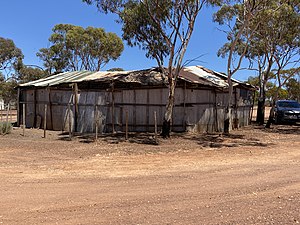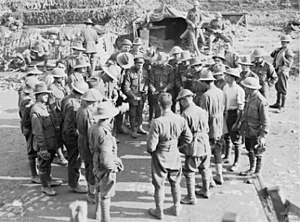



Two-up is a traditional Australian gambling game, involving a designated "spinner" throwing two coins, usually Australian pennies, into the air. Players bet on whether the coins will both fall with heads (obverse) up, both with tails (reverse) up, or with a head and one a tail (known as "Ewan"). The game is traditionally played in pubs and clubs throughout Australia on Anzac Day, in part to mark a shared experience with diggers (soldiers).
The game is traditionally played with pennies, because their weight, size, and surface design make them ideal for the game. Weight and size make them stable on the "kip" and easy to spin in the air. Decimal coins are generally considered to be too small and light and do not fly as well.[citation needed] The design of pre-1939 pennies had the sovereign's head on the obverse (front) and the reverse was totally covered in writing, making the result very easy and quick to see. However, pennies used in the game are usually now marked with a white cross on the tails side. Pennies being used at games on Anzac Day are brought out specifically for that purpose each year.